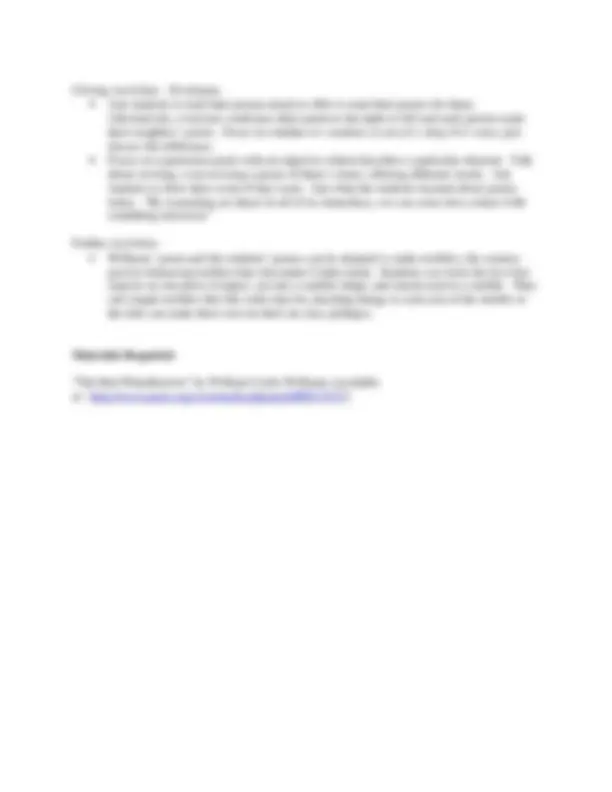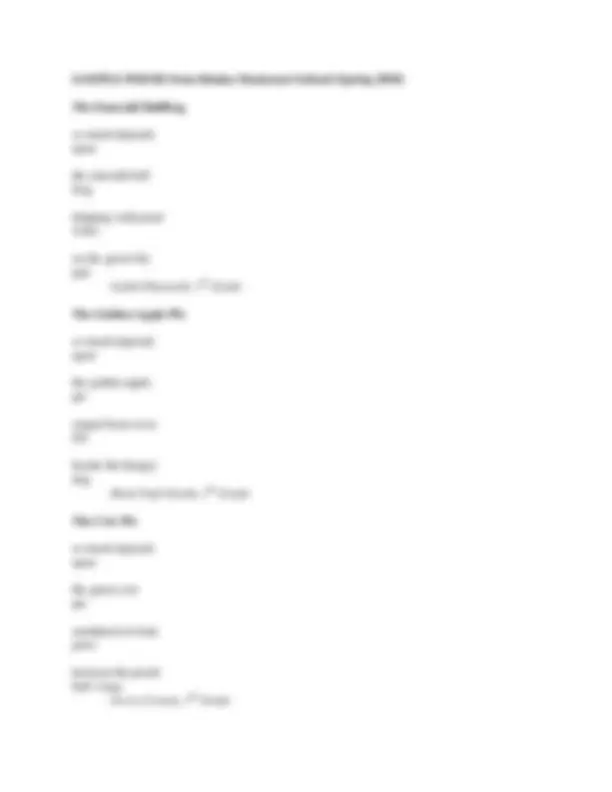




Study with the several resources on Docsity

Earn points by helping other students or get them with a premium plan


Prepare for your exams
Study with the several resources on Docsity

Earn points to download
Earn points by helping other students or get them with a premium plan
Community
Ask the community for help and clear up your study doubts
Discover the best universities in your country according to Docsity users
Free resources
Download our free guides on studying techniques, anxiety management strategies, and thesis advice from Docsity tutors
A 60-minute poetry lesson plan for elementary school students, focusing on the imagist poem 'the red wheelbarrow' by william carlos williams. The plan includes introductory activities to discuss poetry and imagery, writing activities to create their own poems, and closing activities to discuss and revise their work. Students will learn about the poet william carlos williams, the imagist movement, and the importance of precise language and imagery in poetry.
Typology: Study Guides, Projects, Research
1 / 4

This page cannot be seen from the preview
Don't miss anything!



The Red Wheelbarrow by Neil Diamente Elementary School Poet-in-Residence 2010
Grade Level: 1-
Time Frame: 60 minutes
Topic: Image
Learning Objective: To introduce students to poetry using the imagist poem “The Red Wheelbarrow.”
Sequence of Activities:
Introductory Activities: 20 minutes
Writing Activity: 20 minutes
so much depends upon
SAMPLE POEMS from Khalsa Montessori School (Spring 2010)
The Emerald Bullfrog
so much depends upon
the emerald bull frog
dripping with pond water
on the green lily pad
The Golden Apple Pie
so much depends upon
the golden apple pie
singed from oven fire
beside the hungry dog
The Cow Pie
so much depends upon
the green cow pie
smothered in lime grass
between the proud bull’s legs.